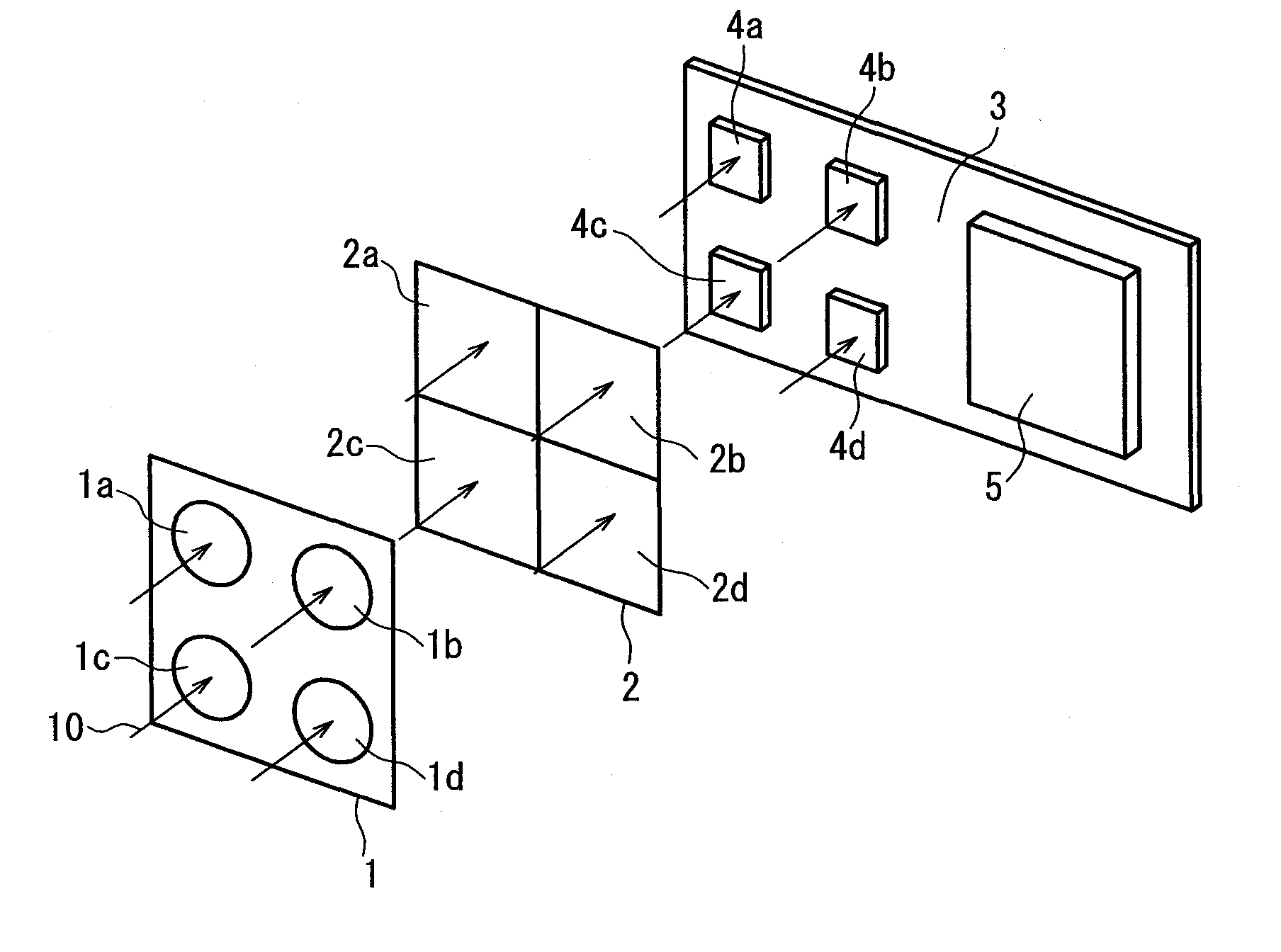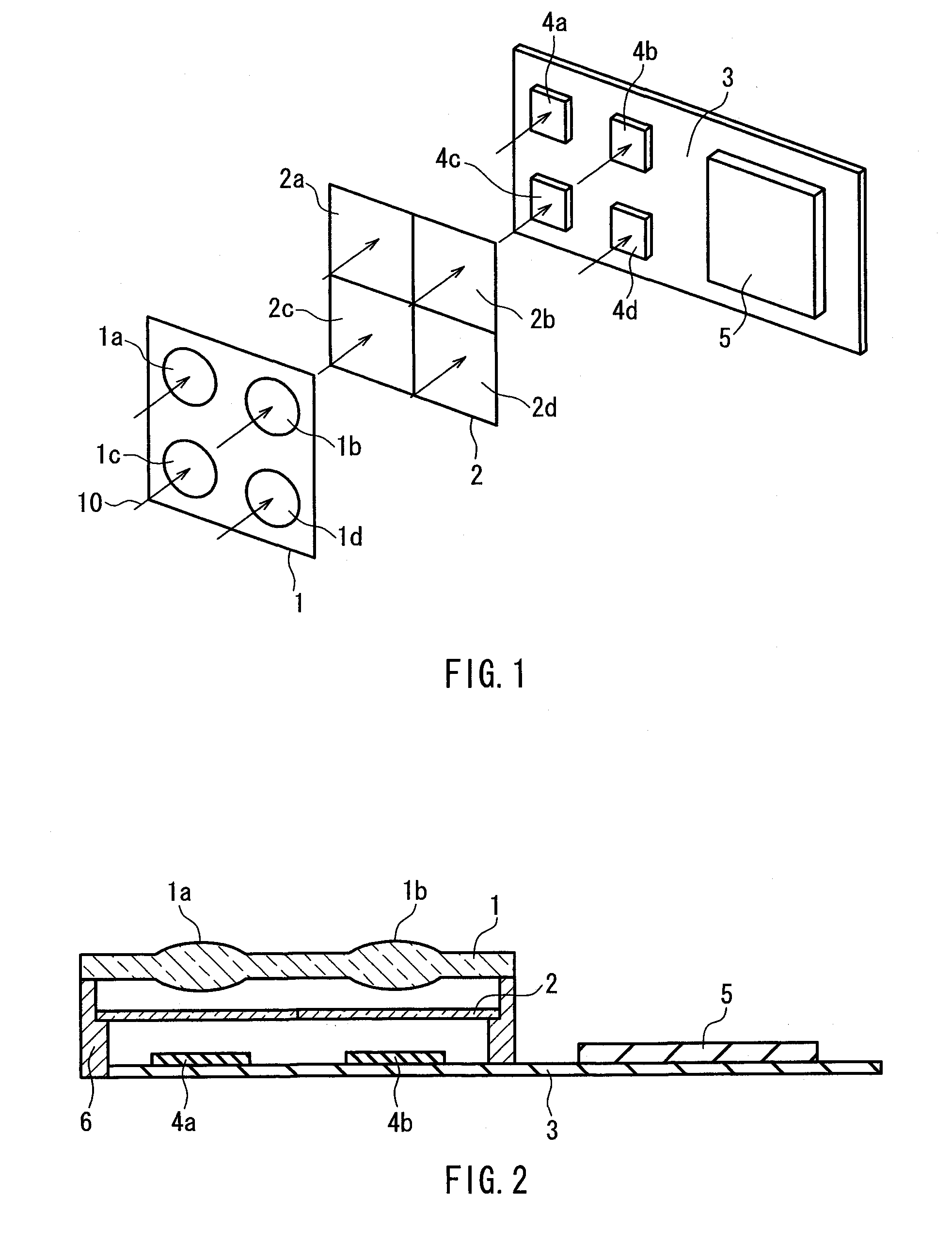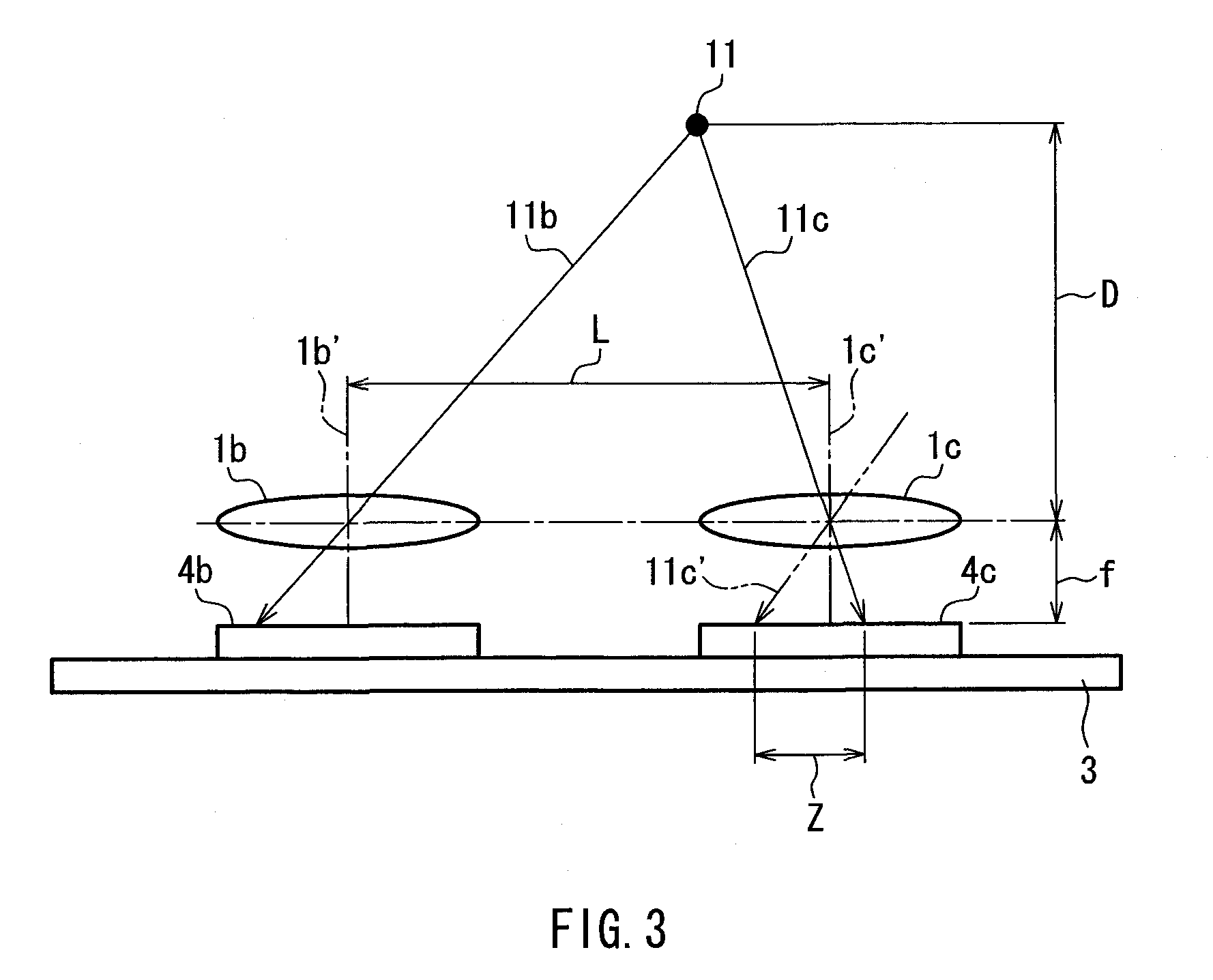Camera Module
a camera module and camera technology, applied in the field of small and slim camera modules, can solve the problems of enlargement of the apparatus, mechanical attachment error of two cameras, and difference in correct distance calculated based on parallax, etc., and achieve the effect of small and low-cost camera modules and simple configuration
- Summary
- Abstract
- Description
- Claims
- Application Information
AI Technical Summary
Benefits of technology
Problems solved by technology
Method used
Image
Examples
embodiment 1
[0042] Hereinafter, Embodiment 1 of the present invention will be described with reference to the drawings.
[0043]FIG. 1 is an exploded perspective view of a camera module of Embodiment 1.
[0044] A camera module of the present embodiment includes a lens module 1, an optical filter module 2, and a substrate 3 in this order from an object side. On the substrate 3, imaging devices 4a-4d, and a signal processing portion 5 composed of a digital signal processor (DSP) and the like are mounted. Arrows 10 represent light beams from the object.
[0045]FIG. 2 is a cross-sectional view of the camera module of the present embodiment along a direction parallel to an optical axis of the lens module 1. In FIG. 2, reference numeral 6 denotes a fixing stage for supporting and fixing the lens module 1 and the optical filter module 2 with respect to the substrate 3.
[0046] In FIG. 1, the optical filter module 2 has four wavelength selection regions 2a-2d. The wavelength selection regions 2a, 2d placed ...
embodiment 2
[0066] Hereinafter, Embodiment 2 of the present invention will be described with reference to the drawings.
[0067] The entire configuration of a camera module of Embodiment 2 is substantially the same as that of the camera module of Embodiment 1 shown in FIGS. 1 and 2, and Embodiment 2 is different from Embodiment 1 in terms of individual constituent elements of the camera module. Hereinafter, Embodiment 2 will be described mainly based on the difference from Embodiment 1.
[0068]FIG. 4 is a conceptual view of an optical filter module 21 used in the camera module according to Embodiment 2. In FIG. 4, wavelength selection regions 21a, 21d placed at positions diagonal to each other are respectively composed of an infrared optical filter for selectively transmitting infrared light among light from an object, and in wavelength selection regions 21b, 21c placed at positions diagonal to each other, red optical filters 21R, green optical filters 21G, and blue optical filters 21B for transmi...
embodiment 3
[0077] Hereinafter, Embodiment 3 of the present invention will be described with reference to the drawings.
[0078] The entire configuration of the camera module of Embodiment 3 is substantially the same as that of the camera module of Embodiment 1 shown in FIGS. 1 and 2, and Embodiment 3 is different from Embodiment 1 in terms of individual constituent elements of the camera module. Hereinafter, Embodiment 3 will be described mainly based on the difference from Embodiment 1.
[0079]FIG. 6 is a perspective view of an optical filter module 31 used in the camera module according to Embodiment 3. In FIG. 6, wavelength selection regions 31b, 31c placed at positions diagonal to each other are respectively composed of a green optical filter for selectively transmitting green light among light from an object, a wavelength selection region 31a is composed of a red optical filter for selectively transmitting red light among the light from the object, and a wavelength selection region 31d is co...
PUM
 Login to View More
Login to View More Abstract
Description
Claims
Application Information
 Login to View More
Login to View More - R&D
- Intellectual Property
- Life Sciences
- Materials
- Tech Scout
- Unparalleled Data Quality
- Higher Quality Content
- 60% Fewer Hallucinations
Browse by: Latest US Patents, China's latest patents, Technical Efficacy Thesaurus, Application Domain, Technology Topic, Popular Technical Reports.
© 2025 PatSnap. All rights reserved.Legal|Privacy policy|Modern Slavery Act Transparency Statement|Sitemap|About US| Contact US: help@patsnap.com



